Seed Germination Test
How to Tell if Your Seeds are ViableThere are times when you wonder if your old seeds are any good. Should I buy all new seeds or plant my old seeds? To answer this question, seeds can be tested to see if they will grow. I do this anytime I am suspect of a package of seeds. This is a super easy job and here is how you do it.
Testing seeds
Before you plant your seeds it is best to test the seeds to see if they are going to sprout. Take ten seeds and place them between two sheets of paper towels. Keep the towels damp and in a warm place for three to ten days, checking the seeds every day. (Image 1) We are looking for temperatures around 65-70 degrees F. The top of the refrigerator is usually a good place. Remember to check the moisture everyday and not let the seeds or paper towels dry out. When you see roots and shoots coming out of the seeds they are good. (Image 2)
Count the number of seeds that germinated, if you have seven seeds out of ten than you have a 70% germination rate. As the seeds get older the germination rate will drop, this is normal. Let’s say you tested some carrot seeds and got a rate of 50%. Half of the seeds are still good.
It is wise to know how good the seeds will germinate so you can compensate for the germination rate when you plant your seeds. If you have a low germination batch of seeds, sow the seeds a little bit thicker.
Don’t worry if you get a low germination rate. As long as the seed will germinate it should be strong enough to grow a good plant. You will simply have to put in more seeds if the rate is low.
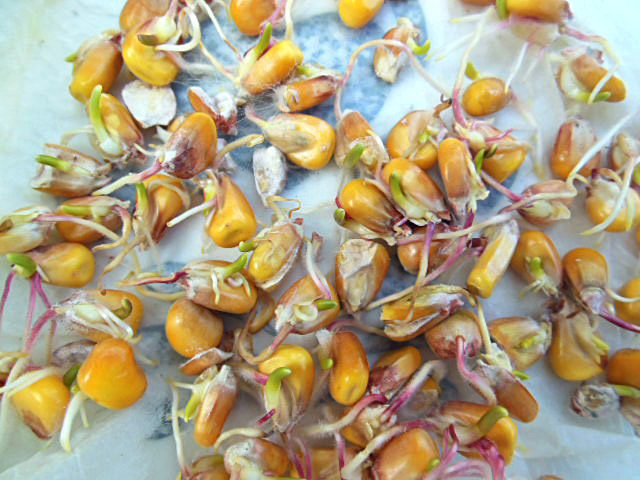
Germinated Corn Seeds
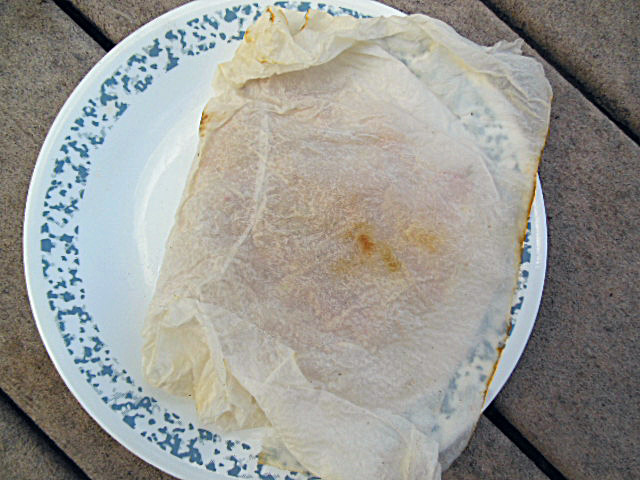
Image 1
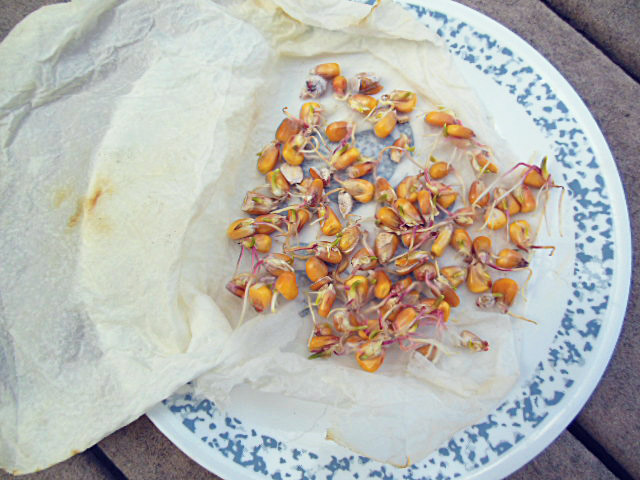
Image 2
What to do with your seeds that germinate
The seeds that you used for your germination test can still be planted in the garden. Place the seeds gently in a hole that is the proper depth for the seed (see the back of the seed package or a rule of thumb is no deeper that 3 times the width of the seed). Be sure not to knock off the root or the sprout. Gently put the proper amount of soil over the top and water in thoroughly. From there it should grow like a normal plant. If it is too soon to plant the seeds out you can add your germinated seeds to the compost or use them as a center piece on the table and see how long you can grow the seeds in a paper towel.
Seed Life Span
Different seeds have different life spans. Onion seeds, for example, rarely live over two years, where as alfalfa seeds can be viable for 20 years. There are even reports of seeds that are hundreds of years old and the seeds will still germinate.
How the seeds are stored affects the lifespan of the seeds. Some seeds, no matter how they are stored, just don’t live long at all. The chart below shows the average life spans of seeds that are stored properly. If a seed is stored too hot (above 90° F) or too moist of an environment, it can be destroyed just days or weeks after the seed is harvested.
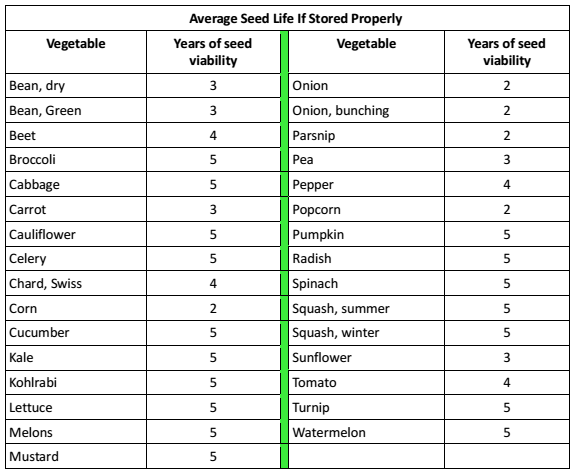
Proper Seed Storage
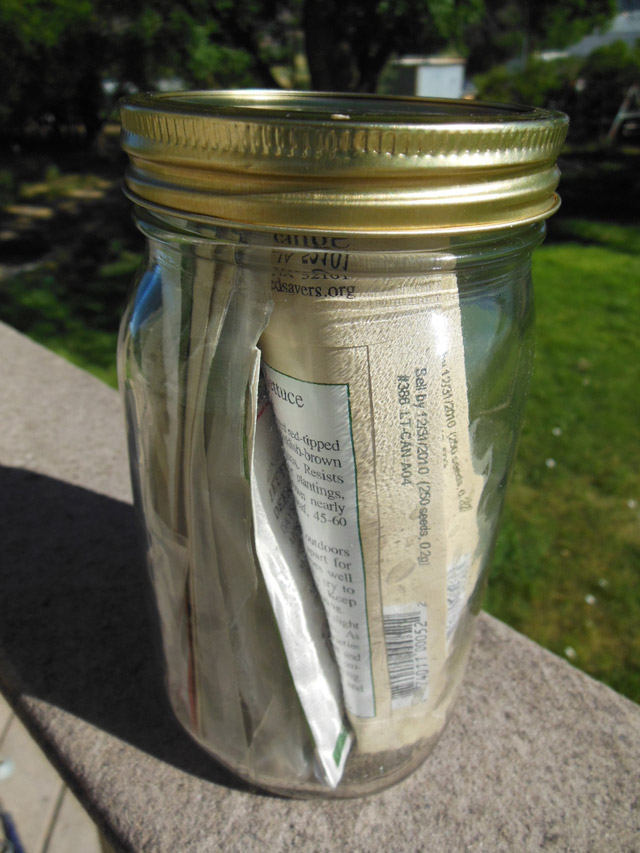 One of the best ways to store seeds is in a glass canning jar. Pack your seeds in an envelope or plastic bag. Pack as many seed packages into a quart canning jar as possible. Screw the lid on tightly and store in a place as close to 40° F as possible. Check the jar for moisture after three days of storage. If you detect any moisture at all, dry the seeds some more.
One of the best ways to store seeds is in a glass canning jar. Pack your seeds in an envelope or plastic bag. Pack as many seed packages into a quart canning jar as possible. Screw the lid on tightly and store in a place as close to 40° F as possible. Check the jar for moisture after three days of storage. If you detect any moisture at all, dry the seeds some more.
The refrigerator is the best place for seed storage. If you have no cool places you can bury the jar in the ground. Beware that the metal ring will rust out in a few years if exposed to too much moisture. The jar creates a partial vacuum which protects the seeds from insect damage and seed loss due to seed respiration.
This is also a must do test if you are saving your own seeds from your garden. You will want to know the germination rate of your home grown seeds so you know if you have preserved your seeds properly.
It gives me peace of mind to know that my seeds are good or not before I plant. I like to test the seeds far enough in advance that I can replace the seeds if they are bad. It is better to test your seeds than to wonder if the seeds were bad or a bug or something ate your seeds and you didn’t get any plants to come up in your garden. This gives you one more tool in your arsenal to use to have a successful garden.

